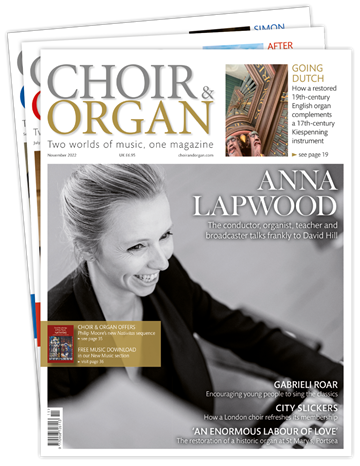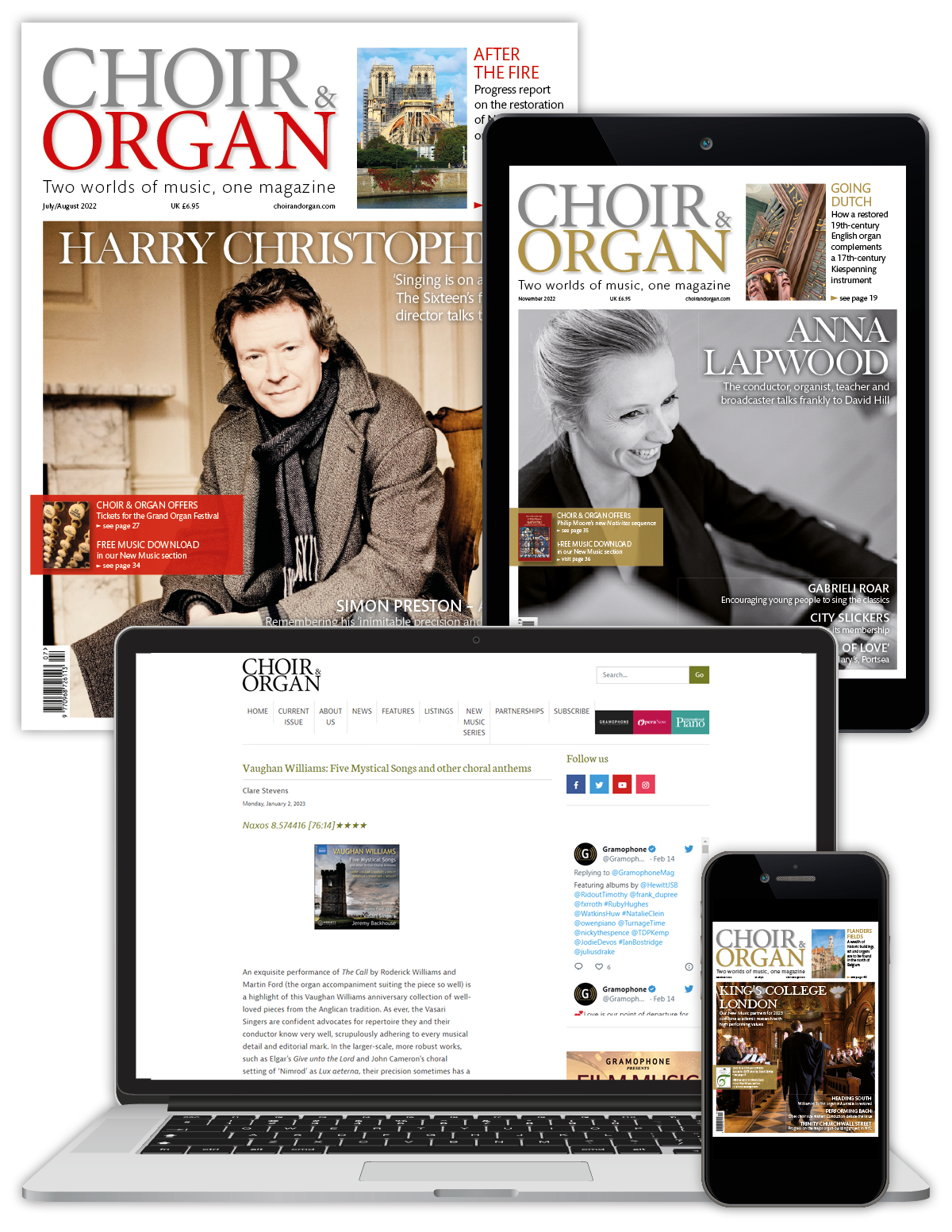Elizabeth Maconchy: a guide to the choral works
Leah Broad
Friday, November 8, 2024
Despite her undeniable talent and influence, Elizabeth Maconchy’s music was often overlooked during her lifetime. Leah Broad explores the bold choral works of a composer of striking emotional depth and intellectual rigour that remain underperformed today

‘For those of us who really know her stuff,’ composer Grace Williams wrote of her friend Elizabeth Maconchy, ‘there is more sense of beauty in her little finger than there is in lots & lots of contemporary composers put together.’ Her letter was an appeal to the conductor Clarence Raybould, to ask whether he would consider performing Maconchy’s music. Sadly, Raybould’s answer was negative. ‘Your remarks have fallen on rather stony ground,’ he replied, ‘as I have yet to see anything of this charming musician which appeals to me.’
This exchange was typical of attitudes to Maconchy’s music throughout the 20th century. Those who supported Maconchy did so avidly, and were convinced that she was among the most significant musical voices of the period. In many ways they were proved right. Born in 1907, by the time of her death in 1994 she was a DBE for her services to music (only the second woman since Ethel Smyth to be awarded that honour), and had served as both chair of the Composers’ Guild and as president of the Society for the Promotion of New Music.
Yet for someone of such acknowledged significance, Maconchy’s reception was often lukewarm. In the 1960s, the same year that saw Benjamin Britten receive 152 BBC broadcasts saw Maconchy get around six. It is only recently that her 13 string quartets have started to enter the repertoire with any sense of longevity, and several of her major works have yet to be recorded (such as her ballet Puck Fair, or opera The Three Strangers). As a result, Maconchy’s music is still in some ways awaiting a proper evaluation, as she remains hugely underrepresented on concert platforms compared to contemporaries of a similar musical stature such as Britten or William Walton.
For Maconchy, literature was an enduring source of inspiration, and she loved working with texts. ‘In searching for words to set every composer must have experienced that magic moment of recognition – ‘This is it – this is what I have been looking for’ – a sort of love-at-first-sight reaction,’ she said. ‘This initial impulse starts the piece going and the sense of complete identification with the words continues to grow as the work takes shape, and persists to the end.’ Unsurprisingly, she wrote a large number of vocal pieces, from solo songs through to operas, cantatas, and choral works. Her writing for choir spanned her entire career, ranging from short works for unaccompanied upper voices, to her gargantuan dramatic cantata Héloïse and Abelard (1975-78), for full chorus, orchestra, and soprano, tenor and baritone soloists.
Explaining her approach to composition, Maconchy said of her work that ‘impassioned argument, this sensitive and moving musical logic, is for me true music’. This captures something vital about the way her music functions – a sense of controlled drama and crisp melodic power drives all her best pieces, including her choral music. In ‘Tiger! Tiger!’ for unaccompanied chorus, the fourth in her seven-movement Creatures of 1979, a descending three-note motif underlies the entire piece. Set to William Blake’s famous poem The Tyger, when the text asks ‘In what furnace was thy brain?’ Maconchy builds up tension by splitting the choir, almost creating a battle between the upper and lower voices, propelled by powerful rhythmic material evoking an anvil and furnace.
But choral music also allowed Maconchy to explore a more sensual, ethereal kind of writing. When her Two Motets for Double Chorus were premiered in 1932, she received a great deal of criticism for the complexity of the writing, including the high tessitura in the soprano parts particularly. ‘It is not much good composers writing works that only archangels can sing in tune,’ the Musical Times complained. This is undoubtedly complex writing, and a challenge for any but the most accomplished singers. But as Maconchy explained to Grace Williams, the effect was quite deliberate. ‘I like lots of high notes – or at least a high texture in choral writing,’ she wrote. ‘It seems to me one can get a sort of suspended-in-mid-air feeling (less “of the earth” than choral writing in the middle & low registers)’. She would return to these stratospheric ranges for her Sirens’ Song (1974), setting a William Browne poem about sirens luring ships to shore. This is quite a different kind of writing from ‘Tiger!’, more concerned with momentary sonic effects and shifting vocal textures.
Maconchy’s choral writing gives us an insight into her politics, too. Both Maconchy and her husband William LeFanu were committed socialists, and dedicated time and money to associated causes, such as fundraising for the Republicans in Spain during the Civil War. (Incidentally, they named their cat after Karl Marx.) In the 1930s, she set a number of texts on socialist themes, including Sylvia Townsend Warner’s The Mothers (1938), Randall Swindler’s The People Advance (1939), The Ribbon In Her Hair by Irish writer Seán O’Casey (1939), and The Voice of the City by Jacqueline Morris (1943), about the destruction of Stalingrad during the Second World War. The latter two were composed for the Workers’ Music Association, for lower and upper voices respectively, accompanied by piano. The Ribbon is a rousing, march-like piece, while The Voice is much more contemplative and mournful. Any of these pieces would fit well into a politically inspired programme – or, in the case of The Voice, a concert focused on wartime composition.
Heloïse and Abelard, her cantata of 1975-78, is undoubtedly Maconchy’s choral magnum opus. Telling the story of two ill-fated 12th-century lovers, this is a work conceived on an enormous scale, written in nine sections lasting around 75 minutes in performance. Heloïse is a philosophy scholar who falls in love with her tutor, Abelard, but they are prevented from being together by Heloïse’s uncle, Fulbert. Their relationship is documented in the letters that they sent one another while Abelard was in a monastery, and it is these letters that Maconchy used as the majority of her source material. This is Maconchy at her theatrical best – although technically a cantata, the writing is so dramatic that it frequently borders on opera, especially in sections like the final scene where Heloïse laments her dead lover.
From Christmas carols to settings of Shakespeare texts, Maconchy’s extensive choral output has something to offer for every choir. Hers is a unique voice, and an underappreciated force in 20th-century music history. When she was going through a low ebb of interest in her work, her tutor Ralph Vaughan Williams encouraged her to ‘push on’, because ‘one day perhaps the key will turn in the lock’. It may have taken longer than Maconchy hoped, but with more recordings and performances of her music, it may be that Maconchy’s key is finally starting to turn.
Leah Broad is an award-winning writer, and the author of Quartet: How Four Women Challenged the Musical World






